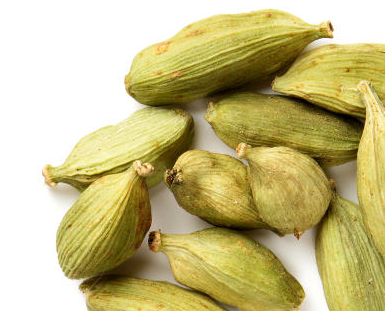The Cardamom, also known as grana of paradise, is a fruit that is mainly used in food as a spice, but also has medicinal properties. For example, it is an expectorant, antiseptic and digestive.

In this article you will know what cardamom is for, what its benefits and properties of the spice are, and some recipe ideas to integrate it into your dishes and enjoy new flavors. You’re going to love it! Let’s start by learning more about its properties.
Benefits and properties of cardamom. What is it for?
There are many benefits that you will find in this medicinal plant. We are going to number them one by one.
Expectorant. Cineole is a compound found in cardamom and is used to naturally remedy coughs and clear the bronchial tubes.
- Antimicrobial. It is not a novelty that has the ability to preserve oral health by inhibiting the growth of bacteria and other microorganisms. The Egyptians knew about this property, as well as the Arabs, who since ancient times chewed the seeds to have good breath.
- Some studies claim that it could be used to treat tonsillitis.
- Promotes digestion. Cardamom improves appetite and strengthens the intestines and stomach. In addition, it reduces flatulence and facilitates the expulsion of gases to the outside, alleviating the pain exerted on the intestinal walls.
- Antirust. Contains vitamins and other anti-aging compounds that protect cells from free radicals.
- Improve appetite. People who suffer from poor appetite are stimulated, since it has sialagogue benefits, that is, it increases salivary production. It also promotes the action of trypsin.
- It stimulates the nervous system, in fact, there are those who use it to avoid fainting because of its aroma, which activates all the senses.
Recipes with spice and cardamom seeds
Here are some tips for consuming cardamom, both its seeds and the spice.
First of all, the green variety can be added to roasted coffee in order to obtain a typical drink from Arab regions, known as Gahwa. You will know a different food for the mixture of sensations. Continuing with the drinks, another possibility is to add it to your Chai tea, typical of India.
Regarding Indian traditions, ground cardamom is an indispensable ingredient in curry making. Curry is made up of various ingredients that give it that flavor. You can integrate it into your meat, fish or rice recipes.
For its part, cardamom seeds have uses in confectionery, such as donuts. Additionally, some bread preparations incorporate them, as well as gingerbread.
Finally, if you wish, you can add it to salads with citrus fruits (orange, tangerine, even apple).
How is its taste?
If we had to describe its flavor, we would define it as a spice with sweet and spicy touches, which penetrates the palate and is slightly reminiscent of citrus. The latter is because it contains limonene. Eucalyptus may also come to mind because of the presence of cineole.
Origin and interesting information about the plant
The properties vary depending on the type of cardamom you consume, which can be.
- Brown, also called Ceylon. It consists of large berries. Its aroma penetrates with intensity. You will find it in the wild growing area of Sri Lanka.
- Green, also called Malabar. These berries, on the other hand, are smaller and greenish. It is the most popular of all, it also has a penetrating aroma that resembles eucalyptus and lemon from the above.
- White. It can actually be of different varieties. The normal thing is that it has been bleached. Its aroma and flavor is less than the previous two.
Regarding the origin of the different species ( Elettaria cardamomum and Amomum costatum ), they are endemic to some tropical forests found in some regions of India, specifically in Sri Lanka and Sumatra. Currently, it is not only a wild plant, but it is cultivated in areas such as Nepal and America. In fact, Guatemala is the country that produces the most cardamom per year.

